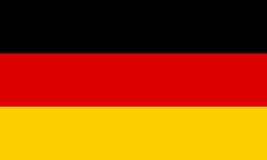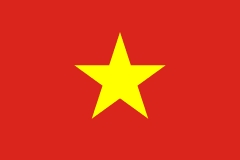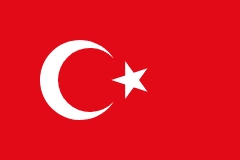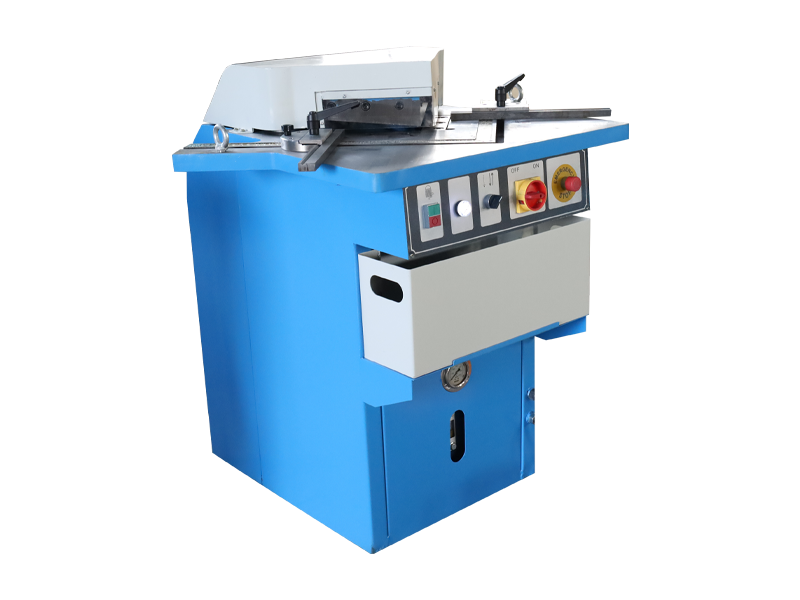In metal fabrication, achieving precise curves, contours, or complex shapes often requires altering metal dimensions without compromising structural integrity. A metal shrinking machine—commonly referred to as a “shrinker”—is a specialized tool designed to compress (or “shrink”) metal workpieces by reducing their length or surface area, enabling the creation of smooth, tight bends and three-dimensional forms. Unlike subtractive methods (e.g., cutting) or additive processes (e.g., welding), shrinking relies on *plastic deformation* to reshape metal, preserving material continuity and strength. This guide explores the machine’s operational principles, types, technical capabilities, industrial applications, and key benefits in modern metalworking.
1. Core Definition & Operational Principles
A metal shrinking machine is a fabrication tool that applies controlled compressive force to localized areas of a metal workpiece (typically sheets, strips, or profiles) to reduce its linear dimensions or surface area. The process leverages the metal’s ability to undergo *plastic deformation*—when force exceeds the material’s yield strength, the metal’s atomic structure rearranges permanently, resulting in “shrinkage” (reduced length/width) and a corresponding increase in thickness (to maintain material volume, per the law of conservation of mass).
Key Operational Mechanics
The core components and workflow of a metal shrinking machine are standardized across designs:
1. Workpiece Clamping: The metal (usually ferrous or non-ferrous sheets, 0.5–6 mm thick) is secured between two sets of serrated or textured jaws. These jaws grip the metal firmly to prevent slippage during force application.
2. Compressive Force Application: A drive system (manual, pneumatic, or hydraulic) moves the jaws toward each other in a controlled, incremental manner. This force compresses the metal’s crystal structure, causing localized shrinkage.
3. Shrinkage Control: The machine’s design limits deformation to specific zones (e.g., along a sheet’s edge or a curved contour). Operators adjust force magnitude, jaw travel distance, or cycle frequency to achieve precise shrinkage (typically 0.1–5 mm per pass, depending on material thickness).
4. Forming: Repeated passes over targeted areas gradually shape the metal into the desired contour (e.g., a concave curve for an automotive wheel arch or a tight radius for an aircraft panel).
*Critical Distinction*: Metal shrinking differs from “stretching” (another forming process) in that shrinking reduces dimensions and increases thickness, while stretching elongates metal and reduces thickness. Fabricators often use both processes in tandem to create complex shapes.
Metal shrinking machines are categorized by their power source and design, each optimized for specific material thicknesses, production volumes, and application requirements.
| Machine Type | Power Source | Key Technical Specs | Ideal Applications |
|----------------------------|--------------------------------------------------------------------------------|-------------------------------------------------------------------------------------|-------------------------------------------------------------------------------------|
| Manual Metal Shrinkers | Operator-applied force (via levers, hand cranks, or ratchets) | - Force Capacity: 5–20 kN<br>- Jaw Opening: 5–25 mm<br>- No external power required | Small-scale projects, hobbyists, or on-site repairs (e.g., fixing dented automotive panels)<br>Low-volume, intricate work (e.g., custom metal art, jewelry fabrication) |
| Pneumatic Metal Shrinkers | Compressed air (6–10 bar, regulated via valves) | - Force Capacity: 20–80 kN<br>- Cycle Rate: 10–30 cycles/min<br>- Adjustable pressure (±0.1 bar) | Medium-volume fabrication (e.g., producing 50–500 automotive body parts/day)<br>Thin-to-moderate gauge metals (0.5–3 mm: aluminum, mild steel) |
| Hydraulic Metal Shrinkers | Hydraulic fluid pressure (10–30 MPa) | - Force Capacity: 80–500 kN<br>- Jaw Travel: 10–50 mm<br>- Slow, controlled force application | Heavy-duty industrial use (e.g., thick-gauge steel >3 mm, stainless steel, or titanium)<br>High-stress components (e.g., aerospace structural parts, heavy machinery frames) |
| Combination Shrinker-Stretchers | Manual/pneumatic/hydraulic (dual-function design) | - Switchable between shrinking and stretching modes<br>- Interchangeable jaws (for different metal types) | Versatile fabrication shops handling mixed tasks (e.g., shaping both concave and convex curves for marine hulls or truck bodies) |
3. Technical Capabilities & Material Compatibility
The effectiveness of a metal shrinking machine depends on material properties (e.g., ductility, yield strength) and machine specifications. Below is a breakdown of its key capabilities:
3.1 Material Range
Shrinkers work best with ductile metals—materials that can undergo significant plastic deformation without cracking. Common compatible metals include:
- Ferrous Metals: Mild steel (A36), low-alloy steel (4130), and stainless steel (304/316) (ideal for structural components).
- Non-Ferrous Metals: Aluminum (6061/5052), copper, and brass (used for lightweight parts or decorative components).
*Limitations*: Brittle metals (e.g., cast iron, high-carbon steel >0.6% carbon) are not suitable, as they may crack under compressive force.
3.2 Thickness & Size Limits
- Manual Shrinkers: Handle metals 0.5–2 mm thick (max sheet width: 300 mm).
- Pneumatic Shrinkers: Process 0.5–3 mm thick metals (max sheet width: 600 mm).
- Hydraulic Shrinkers: Accommodate 2–6 mm thick metals (max sheet width: 1,200 mm for industrial models).
3.3 Shrinkage Precision
Modern pneumatic/hydraulic shrinkers offer repeatable precision (±0.05 mm per pass) when paired with:
- Force Regulators: Maintain consistent pressure to avoid over-shrinking (which causes wrinkling) or under-shrinking (which fails to achieve the desired shape).
- Digital Controls: Display jaw travel distance and cycle count, enabling operators to replicate results across multiple workpieces.
4. Industrial Applications
Metal shrinking machines are critical in sectors requiring precise, seamless metal shaping. Key applications include:
4.1 Automotive Manufacturing & Repair
- Body Panel Fabrication: Shaping curved components (e.g., wheel arches, fenders, roof contours) from flat steel/aluminum sheets. Pneumatic shrinkers are used for high-volume production, while manual models handle custom or classic car restorations.
- Dent Repair: Localized shrinking of stretched metal around dents (a common issue in collision repair) to restore panel flatness without replacing the entire part.
4.2 Aerospace & Aviation
- Structural Components: Forming tight-radius curves for aircraft fuselage panels, wing ribs, or engine nacelles (using hydraulic shrinkers for thick-gauge titanium or stainless steel).
- Interior Parts: Shaping lightweight aluminum panels for cabin interiors (e.g., overhead bins, seat frames) with pneumatic shrinkers to ensure dimensional accuracy.
4.3 Marine & Shipbuilding
- Hull Fabrication: Creating concave/convex curves for boat hulls or deck components (using combination shrinker-stretchers to balance shrinking and stretching).
- Rust-Resistant Parts: Shaping stainless steel or aluminum marine hardware (e.g., railings, hatches) to withstand saltwater corrosion.
4.4 Custom Fabrication & Art
- Metal Art & Sculpture: Manual shrinkers enable artists to create intricate, organic shapes from copper or brass (e.g., decorative wall panels, sculptures).
- Architectural Metalwork: Shaping aluminum or steel for curved staircases, handrails, or building facades—hydraulic shrinkers handle large, thick-gauge sections.
4.5 Heavy Machinery & Industrial Equipment
- Equipment Frames: Forming thick-steel components (e.g., tractor cabs, construction equipment housings) with hydraulic shrinkers to ensure structural rigidity.
- Pressure Vessels: Creating smooth, wrinkle-free curves for small pressure vessels (e.g., fuel tanks) where leaks or weak points could cause failure.
5. Key Benefits of Metal Shrinking Machines
Compared to alternative shaping methods (e.g., cutting-and-welding, casting), metal shrinking offers distinct advantages:
5.1 Structural Integrity
Shrinking preserves the metal’s continuous grain structure, avoiding weak points created by welds or cuts. This results in parts with 15–30% higher fatigue resistance (critical for high-stress applications like aerospace or automotive).
5.2 Precision & Consistency
Modern shrinkers (especially pneumatic/hydraulic models) deliver repeatable results, ensuring all parts in a production run meet tight tolerances (±0.1 mm). This reduces rework and scrap rates (typically <5%, vs. 10–15% for welding-based methods).
5.3 Efficiency
- Time Savings: Shaping a curved panel with a pneumatic shrinker takes 5–10 minutes, vs. 30–60 minutes for cutting, bending, and welding.
- Reduced Labor: Automated models (pneumatic/hydraulic) require minimal operator intervention, freeing staff for other tasks.
5.4 Versatility
Combination shrinker-stretchers handle both shrinking and stretching, eliminating the need for separate machines. Interchangeable jaws (e.g., serrated for steel, smooth for aluminum) allow use with multiple materials.
5.5 Cost-Effectiveness
- Low Upfront Cost: Manual shrinkers cost $100–$500; pneumatic models $1,000–$5,000—far less than welding equipment or CNC forming machines.
- Minimal Scrap: Since no material is removed, scrap rates are near-zero, reducing material waste and costs.


 English
English  中文
中文  Arabic
Arabic  Russian
Russian  Spanish
Spanish  Portuguese
Portuguese  French
French  German
German  Hindi
Hindi  Thai
Thai  Vietnamese
Vietnamese  Khmer
Khmer  Italian
Italian  Turkish
Turkish  Korean
Korean  Belarusian
Belarusian 

